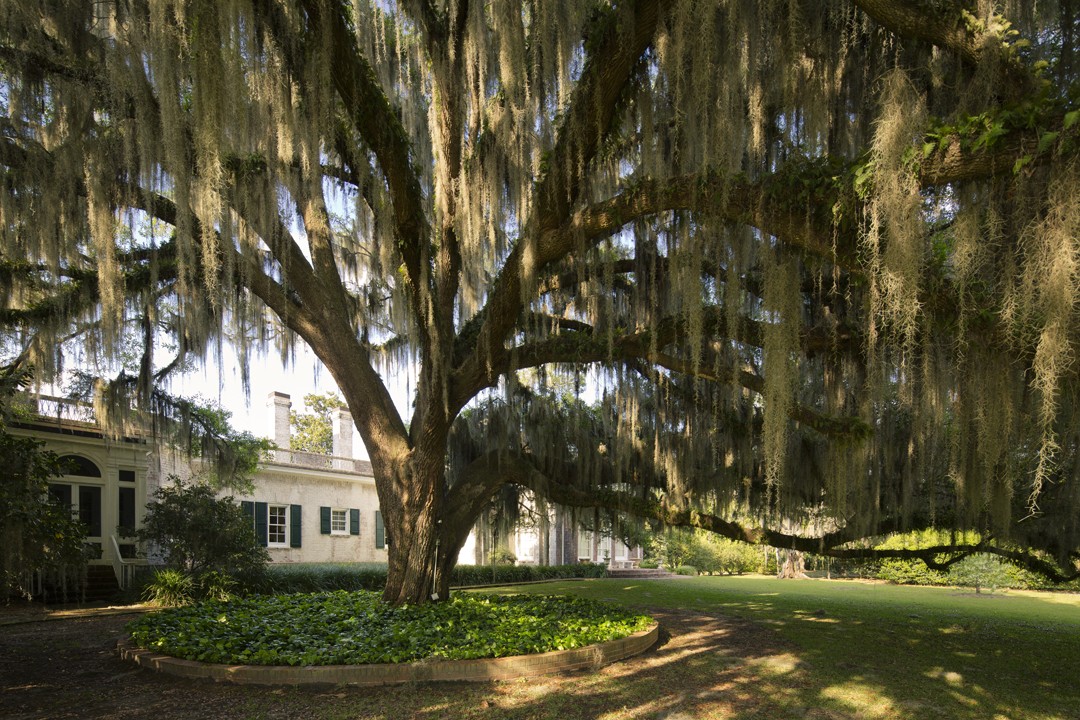Welcome to Pebble Hill Plantation
Pebble Hill is a must-see when you visit Thomasville, Georgia
Once the elegant winter retreat of the Howard Melville Hanna family, Pebble Hill stands today as a shining example of a 20th-century Southern sporting estate.
With its relaxed elegance, rich history, stately architecture, and breathtaking natural beauty, Pebble Hill offers a glimpse into a bygone era—one that continues to captivate and inspire all who pass through its gates.
A Brief History of Pebble Hill Plantation
“From the time of Pebble Hill’s beginnings, the people who lived and worked here have had a profound impact in shaping this estate. Their contributions and the stories they left behind add to our understanding of this property. We continue to research and add to our interpretive materials as more information is learned.” Lori Curtis, Curator, Pebble Hill Plantation
The Early Years
In the early times, the Thomas County area was inhabited by the Lower Creek and Apalachee Indians. In 1825, Thomas Jefferson Johnson bought the first land that would eventually be known as Pebble Hill. Crops such as cotton, sugar cane, corn, and tobacco were grown here. Like most plantations in the region at the time, Pebble Hill was worked by slave labor. The 1830 census recorded 21 enslaved persons on the property.
Johnson’s daughter and her husband, Julia Ann and John William Henry Mitchell, were later the owners and saw the property through the Civil War and post-war depression. By this point, Pebble Hill was in a serious state of disrepair, and the practice of slavery had been abolished. Some formerly enslaved people continued to reside at Pebble Hill during this period. One of the former individuals, Sarah, who had taken care of the Mitchell children, took the last name of Johnson and continued to live at Pebble Hill.
Beginning in the 1870s the emergence and growth of Thomasville as a winter resort marked major changes to the function of Pebble Hill and Thomas County. Northerners began coming to Thomas County seeking relief from the harsh northern winters. Once introduced to the hunting attractions they became enthusiastic visitors. Northern families began buying estates that had once been cultivated for crops and converting them into hunting preserves. This would be the case for Pebble Hill.
A New Era
The second era in Pebble Hill’s history began in 1896 when Howard Melville Hanna of Cleveland, Ohio purchased the property. The plantation changed from a working farm into a winter home and sporting estate for the Hanna family. Today, none of the buildings from the Johnson-Mitchell era still exist.
Mr. Hanna gave Pebble Hill to one of his daughters, Kate Hanna Ireland (later Harvey), in 1901. Kate hired Sarah to become the nanny to her daughter, Elisabeth “Pansy” Ireland (later Poe). Sarah lived at Pebble Hill until her death.
Kate restored the existing house and enjoyed it as a winter home and sporting plantation. In 1934 a fire destroyed that house, and by 1936, a new house was built. This is the house you see today. She employed approximately 100 men and women to run her estate. Most staff lived on site, and a school was established on Pebble Hill for the employees’ children. Upon Kate’s death in 1936, the property passed to Pansy. Like her mother, she recognized and appreciated the importance of the staff in the day-to-day operations of Pebble Hill. She funded the college education for several of the children of her employees.
Pansy willed that the property be opened to the public at her death. Her desire was to share the property that she loved so dearly and to preserve it as a tangible glimpse into the 20th century lifestyle that her family once enjoyed. The sentiment expressed below in a letter Kate wrote to Pebble Hill’s Superintendent, William MacPherson, in 1930 shows the Hanna family’s dedication to the preservation of the property and its history.
“We want to preserve, as fully as possible, the attractive old parts of the plantation, for a factor in Pebble Hill’s charm lies in the retention of the old and the harmony between the old and the new.”
Pebble Hill Plantation is listed in the National Register of Historic Places and has been open to the public since October 1983.
